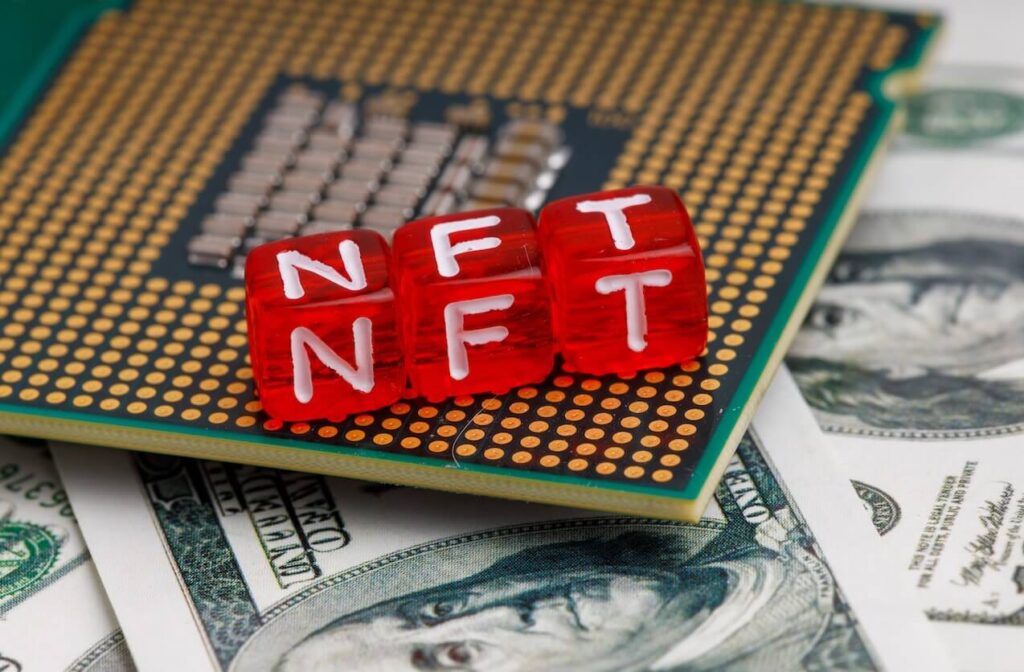In the ever-evolving landscape of blockchain technology, Ethereum has emerged as a powerful force, paving the way for a remarkable shift in the concept of digital ownership. This transformation has been catalyzed by the explosive growth of NFTs (Non-Fungible Tokens), which are reshaping the way we perceive and trade digital assets. In this article, we will explore the NFT boom and how Ethereum, in collaboration with platforms, plays a pivotal role in revolutionizing digital ownership.
Source: Unsplash
Table of Contents
The Rise of Non-Fungible Tokens (NFTs)
Digital assets redefined
NFTs have taken the world by storm, enabling individuals to buy, sell, and trade unique digital items securely. Unlike cryptocurrencies such as Bitcoin or Ethereum, which are fungible and interchangeable, NFTs are indivisible and represent one-of-a-kind items. This uniqueness is achieved through Ethereum’s smart contracts, which underpin the NFT ecosystem. To enter this exciting world of digital ownership, enthusiasts are turning to platforms and exploring the countless opportunities presented by NFTs.
What Are NFTs, and How Do They Work?
Demystifying the concept
NFTs are essentially digital certificates of authenticity, providing indisputable proof of ownership and provenance for a variety of digital assets. These assets can include digital art, music, videos, virtual real estate, collectibles, and more. Ethereum’s blockchain technology is the driving force behind NFTs, as it allows for the creation and tracking of these unique tokens. This transformation in digital ownership is akin to owning a piece of history in the digital realm.
Ethereum: The Backbone of NFTs
The underlying technology
Ethereum is the platform that brought NFTs into existence. Its blockchain, with its smart contract functionality, makes it possible for artists, creators, and collectors to tokenize their digital creations. Smart contracts are self-executing agreements with the terms of the contract directly written into code, ensuring that ownership and royalties are automatically enforced. Ethereum’sdecentralized nature also means that no single entity has control over the NFT market, promoting trust and transparency.
The Artist’s Perspective
Empowering creators
For artists and creators, Ethereum and NFTs represent a revolution in the way they can monetize their work. Traditionally, artists relied on intermediaries and galleries to sell their art, which often resulted in a substantial portion of the revenue going to these middlemen. With NFTs, artists can sell their digital creations directly to their audience, receiving a fair share of the profits and maintaining greater control over their work.
The Collector’s Delight
Digital scarcity and value
Collectors are also reaping the benefits of the NFT boom. Owning a digital collectible can be a source of pride and status in the online world. The scarcity factor of NFTs adds to their allure, as owning a unique item can be a status symbol. Additionally, NFTs are easily transferable and can appreciate in value, making them an attractive investment opportunity.
The Gaming Connection
In-game assets go digital
The gaming industry has embraced NFTs with open arms. Virtual in-game items, skins, and even entire plots of virtual land can be tokenized as NFTs. Gamers can buy, sell, and trade these assets on NFT marketplaces. This not only enhances the gaming experience but also provides a way for gamers to monetize their in-game achievements. Ethereum’s smart contracts ensure the security and authenticity of these digital assets.
Environmental Concerns
Balancing innovation and sustainability
The rise of NFTs on the Ethereum blockchain has raised concerns about the environmental impact of blockchain technology. Ethereum relies on energy-intensive proof-of-work (PoW) consensus, which has led to criticisms regarding its carbon footprint. However, Ethereum is in the process of transitioning to a more sustainable proof-of-stake (PoS) model with Ethereum 2.0, which will significantly reduce its energy consumption and environmental impact.
The Role of Online Trading Platforms
Facilitating NFT transactions
As the NFT market continues to grow, online trading platforms play a crucial role in facilitating the buying and selling of NFTs. These platforms provide a user-friendly interface for NFT enthusiasts to access the NFT market, discover new digital assets, and engage in secure transactions. They offer a seamless experience for both newcomers and seasoned NFT collectors, promoting the growth of the NFT ecosystem.
The Future of Digital Ownership
Unlimited potential
The NFT boom and Ethereum’s role in it are just the beginning of a digital ownership revolution. As blockchain technology continues to evolve and mature, we can expect even more innovative use cases for NFTs and digital assets. Whether it’s tokenizing real-world assets, enhancing the gaming experience, or empowering artists, Ethereum’s blockchain is at the forefront of this transformative journey.
Conclusion
In conclusion, the NFT boom, driven by Ethereum’s blockchain technology, is redefining the concept of digital ownership. NFTs empower artists, collectors, and gamers while introducing new possibilities for the digital economy. As Ethereum transitions to a more environmentally friendly model and the NFT market expands, the future of digital ownership looks promising. Online trading platforms are essential in connecting individuals to this exciting world, making the NFT boom accessible to all.
The post The NFT Boom: How Ethereum is Transforming Digital Ownership appeared first on Top Entrepreneurs Podcast | Enterprise Podcast Network.

